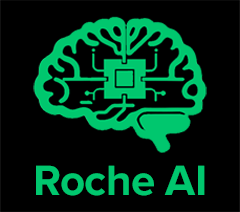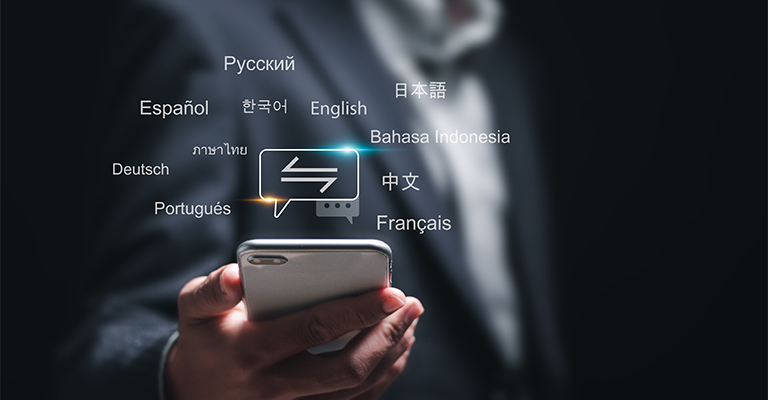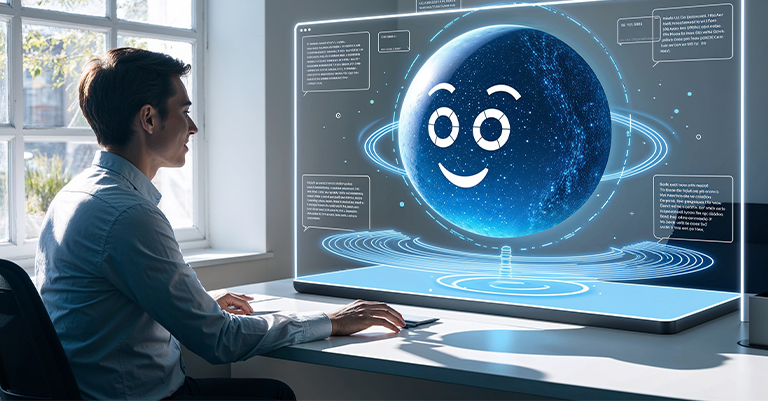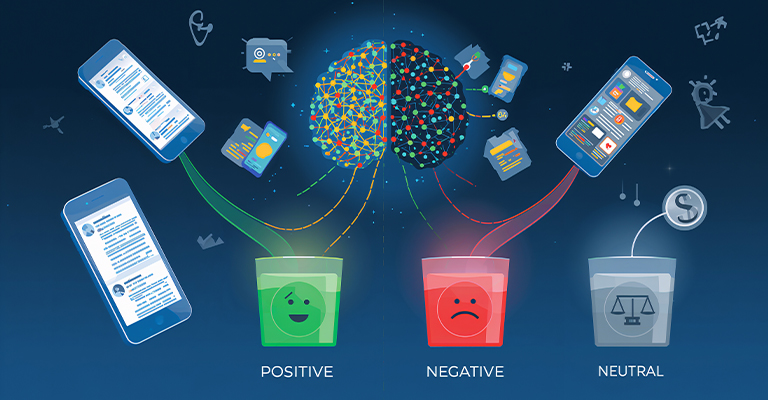TL;DR: AI language translation turns your words into other languages automatically and instantly. Think of it like having a super-smart translator that has read millions of books in different languages. These systems learn patterns from extensive reading to understand the meaning of words in various situations. For businesses, this technology saves money (up to 90% less than hiring translators) and saves time (launch campaigns in 100+ languages at once). This guide explains how it works and provides guidance on using it for your marketing.
- What Is AI Language Translation?
- How AI Translation Works
- Neural Machine Translation Systems
- Traditional vs. AI Translation Methods
- Benefits for Digital Marketing
- Real-World Marketing Applications
- Challenges and Limitations
- Best Practices for Implementation
- Future of Translation Technology
- Getting Started with AI Translation
- Conclusion
Have you ever wondered how websites instantly translate into dozens of languages? AI language translation makes this possible. This technology has revolutionized how businesses communicate across borders. As a result, companies can now reach global audiences without hiring large translation teams.
AI language translation uses machine learning to convert text from one language to another. Unlike older methods, these systems learn from millions of examples. They understand context, idioms, and cultural nuances better than ever before. For digital marketers, this technological leap means faster campaigns and broader reach.
In this guide, you’ll learn how AI translation works from the ground up. Moreover, we’ll explore its impact on modern marketing strategies. You’ll discover practical applications and actionable best practices. By the end, you’ll understand why this technology matters for your marketing efforts and how to leverage it effectively. Let’s dive into the world of intelligent translation systems.
What Is AI Language Translation?
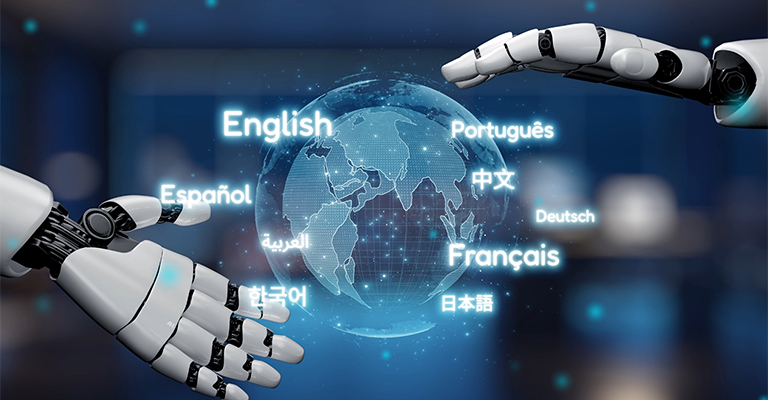
Definition: AI language translation is technology that automatically converts text between languages using artificial intelligence and machine learning algorithms to understand context and meaning.
AI language translation automatically converts text between languages using artificial intelligence. Instead of following rigid rules, these systems learn patterns from vast amounts of data. They analyze how humans translate and apply those insights to new content.
Think of it like teaching a student through examples rather than memorizing a dictionary. You show them thousands of translations, and they learn the underlying patterns. Similarly, AI models study millions of translated documents to identify relationships between words, phrases, and meanings across languages. This learning approach forms the foundation of modern translation technology.
Core Components
Building on this foundation, these systems rely on three main elements. First, they need massive datasets of translated text for learning. Second, they use neural networks to process language patterns. Finally, they employ algorithms that improve over time through continuous feedback. These components work together to create increasingly accurate translations.
How It Differs from Regular Software
Understanding these components helps explain why AI translation outperforms traditional software. Older translation programs used dictionaries and grammar rules exclusively. In contrast, AI systems understand context and meaning through learned patterns. For instance, they know “bank” can mean a financial institution or a riverbank. The surrounding words help them choose correctly, something rule-based systems struggled to accomplish. This contextual understanding sets AI apart from previous translation approaches.
What to explore next: How does the actual translation process work step by step? What happens when you input text into an AI translation system?
How AI Translation Works
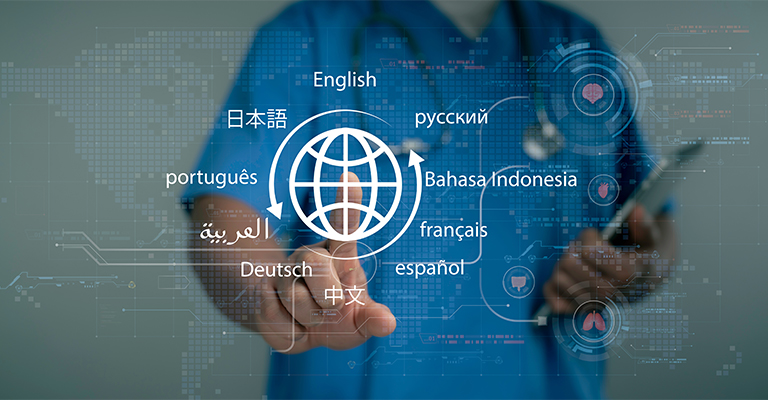
Now that you understand what makes AI translation unique, let’s explore the actual process. The system begins when you input text for translation. The AI breaks your sentence into smaller pieces called tokens, which might be words, parts of words, or punctuation marks. Subsequently, the system analyzes each token’s meaning and relationship to others in the sentence.
Neural networks then process these tokens through multiple layers of analysis. Each layer extracts different features like grammar, context, and semantic meaning. The system then predicts the most likely translation in your target language. Notably, this complex process happens in milliseconds, making real-time translation possible.
The Learning Process
Before systems can translate this quickly, they undergo extensive training. AI models train on parallel texts—documents that exist in multiple languages simultaneously. They compare these translations to understand how concepts transfer between languages naturally. Over time, they recognize patterns and improve accuracy through exposure to more examples. This training phase can take weeks using powerful computers, but it creates the intelligence that drives instant translations.
Real-Time Processing
Once trained, modern systems translate almost instantly for end users. They use pre-trained models that have already learned language patterns during development. When you need a translation, the model applies its accumulated knowledge immediately. Therefore, you get results faster than any human translator could provide, making AI translation practical for high-volume marketing needs.
What to explore next: What specific AI architecture makes these translations more accurate than older methods? How have neural networks improved translation quality?
Neural Machine Translation Systems

Building on these processing capabilities, neural machine translation (NMT) represents the current standard in AI translation. These advanced systems use deep learning to understand entire sentences at once. Unlike older methods that translated word by word, NMT considers full context throughout the translation process. This holistic approach produces more natural results.
Definition: Neural machine translation (NMT) is an AI approach that uses deep learning neural networks to translate entire sentences while maintaining context and meaning throughout the process.
The architecture resembles how your brain processes language naturally. An encoder reads the source text and creates a representation of its meaning. Then, a decoder generates the translation in your target language based on that representation. This two-step process maintains context throughout, ensuring coherent translations rather than disjointed word substitutions.
Attention Mechanisms
Taking this architecture further, NMT systems use attention mechanisms to focus on relevant words dynamically. When translating “bank,” the system checks surrounding words like “river” or “money” to determine meaning. This helps it choose the correct interpretation based on context. Attention makes translations more accurate and natural-sounding by mimicking human comprehension strategies.
Transformer Models
Recent advances have taken NMT even further with transformer architecture. These cutting-edge models process entire documents simultaneously rather than word by word. Consequently, they capture long-range dependencies better than previous architectures could. Popular examples include Google Translate and DeepL, both of which use transformer-based systems for superior results. These innovations continue pushing translation quality closer to human levels.
What to explore next: How does modern AI translation compare to previous translation methods? What made older systems less effective?
Traditional vs. AI Translation Methods
| Method | Speed | Accuracy | Cost | Best For |
| Rule-Based | Slow | Low-Medium | High Maintenance | Simple, structured text |
| Statisitical | Medium | Medium | Medium | General content |
| AI / Neural | Very Fast | High | Low Operational Cost | All content types |
| Human | Slow | Highest | Very High | Critical brand messaging |
To fully appreciate these modern capabilities, it helps to understand what came before. Translation technology has evolved dramatically over the past few decades, with each generation improving on its predecessor’s limitations.
Rule-Based Translation
The earliest computerized systems relied on linguistic rules and dictionaries exclusively. Programmers manually coded grammar patterns for each language pair based on linguistic theory. This approach worked for simple sentences but struggled with complexity and nuance. Additionally, it required constant updates from language experts whenever new expressions emerged, making it expensive to maintain.
Statistical Machine Translation
Before neural networks emerged, statistical methods dominated the field as an improvement. These systems analyzed probability patterns in large collections of translated texts. They would choose the most likely translation based on frequency and co-occurrence patterns. However, they often produced awkward or unnatural results because they lacked true understanding of meaning. This probabilistic approach was better than rules alone but still fell short.
AI Language Translation Advantages
Modern AI methods outperform these older approaches significantly across all metrics. They handle idioms, slang, and cultural references better than previous systems. Furthermore, they adapt to new language trends automatically without manual programming. The quality gap continues to widen as AI systems improve through exposure to more data.
Beyond quality, speed is another major advantage that transforms practical applications. AI translates documents in seconds that would take humans hours to complete. This efficiency makes real-time communication possible across language barriers at scale. For marketers, this speed advantage means faster campaign launches and quicker customer responses, creating competitive advantages in global markets.
What to explore next: How do these technical advantages translate into practical marketing benefits? What specific value does AI translation provide to marketing teams?
Benefits for Digital Marketing
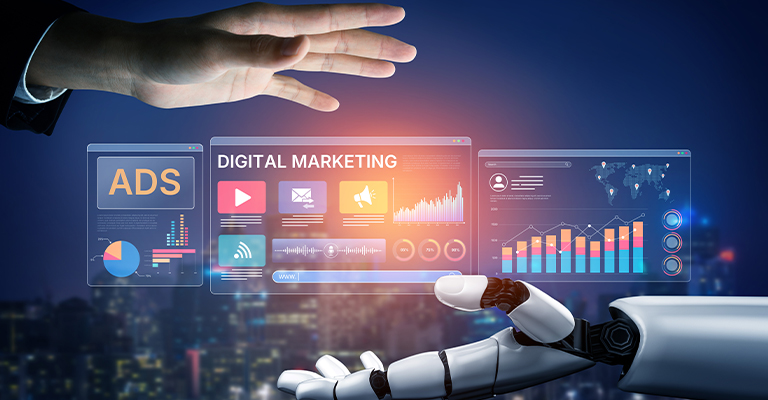
Given these technological advantages, AI language translation fundamentally transforms how you reach global audiences. First and most obviously, it dramatically reduces translation costs across your organization. Instead of hiring translators for every language, you can automate the bulk of the process. This frees up budget for other marketing activities like content creation and paid advertising.
Speed matters critically in competitive markets where timing often determines success. AI allows you to launch campaigns simultaneously across countries without delays. While competitors wait for translations, you’re already engaging customers and capturing market share. Moreover, you can respond to market trends immediately in multiple languages, maintaining relevance across all your markets simultaneously.
Scalability
Beyond cost and speed, scalability transforms your growth potential entirely. You can expand to new markets without proportional cost increases eating into margins. Translating content for one language costs about the same as translating for twenty languages. This scalability enables small businesses to compete globally against larger competitors. Previously, only large corporations could afford truly multilingual marketing at scale.
Consistency
Another often-overlooked benefit is consistency across all your translated materials. AI maintains consistent brand voice and terminology across languages automatically. The same expressions appear in all translations, reinforcing your message uniformly. Human translators might interpret things differently based on personal style, potentially creating confusion. Automated systems ensure uniformity in your global communications, strengthening brand recognition worldwide.
Personalization at Scale
Finally, AI enables personalization across markets efficiently without sacrificing consistency. You can personalize content for different regions while maintaining your core message intact. For example, idioms translate to culturally appropriate equivalents automatically based on learned patterns. This localization happens without manual intervention for each market, letting you maintain both scale and cultural relevance simultaneously.
What to explore next: What specific marketing channels benefit most from AI translation? How are leading companies applying this technology in practice?
Real-World Marketing Applications
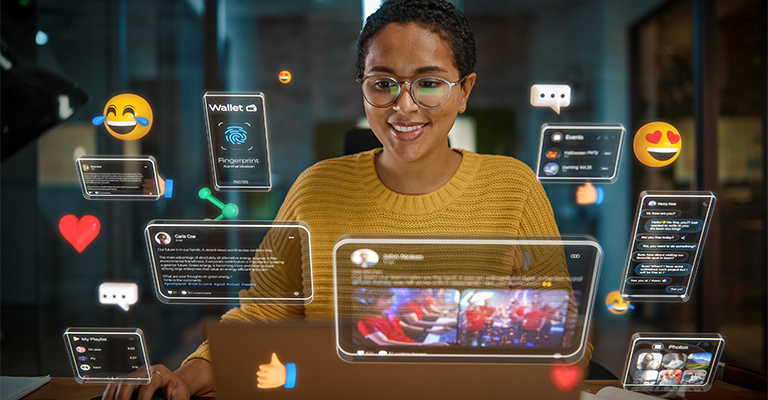
These benefits translate into concrete applications across every marketing channel you use. Let’s explore how leading companies apply AI translation to specific marketing challenges.
Website Localization
Many successful companies use AI to translate entire websites automatically for visitors. Users can switch languages instantly and browse naturally without delays. This improves user experience significantly and increases conversion rates across markets. E-commerce sites particularly benefit from this capability, as product information becomes accessible to global customers immediately.
Example: Shopify merchants using translation apps see average conversion rate increases of 13% when offering content in customers’ native languages.
Social Media Management
Moving beyond websites, managing social accounts across languages becomes manageable with AI assistance. You can respond to customer comments quickly, regardless of what language they’re written in. Additionally, you can schedule posts in multiple languages simultaneously while maintaining consistent timing. This maintains engagement with diverse audiences without requiring multilingual team members for every platform.
Email Marketing Campaigns
AI language translation enables personalized email campaigns that reach global audiences effectively. You write one campaign template and translate it automatically for each market. The system adapts subject lines and body content for linguistic and cultural fit. Consequently, you maintain consistent timing and messaging across all regions without delays for manual translation.
Content Marketing
Similarly, blog posts, videos, and podcasts can reach exponentially wider audiences through automated translation. You create content once and distribute it globally with minimal additional effort. AI handles subtitles, transcripts, and written translations across formats. This multiplies your content’s value without requiring extra production costs for each language version.
Customer Support
Perhaps most impactfully, chatbots powered by AI translation provide 24/7 multilingual support automatically. Customers get help in their preferred language instantly without waiting for available agents. This improves satisfaction scores while simultaneously reducing support costs. Human agents only handle complex issues that require cultural expertise or emotional intelligence, optimizing your support team’s time.
What to explore next: While these applications sound promising, what challenges should you anticipate? What limitations does AI translation still face?
Challenges and Limitations

Despite these impressive capabilities and applications, AI translation still faces important obstacles. Understanding these limitations helps you deploy the technology more effectively and avoid potential pitfalls.
Cultural nuances remain difficult to capture perfectly through automated systems alone. Humor, sarcasm, and wordplay often get lost in translation without human intervention. You still need human review for critical marketing materials where tone matters significantly. This is particularly true for brand messaging that defines your market position.
Context Sensitivity
Related to cultural challenges, AI sometimes misinterprets context in specialized fields and industries. Technical jargon, legal terms, and medical vocabulary require extra caution and verification. For instance, a mistranslated product warning could create serious liability problems. Always verify important documents with professional translators who understand industry-specific terminology and requirements.
Brand Voice Preservation
Moving beyond accuracy to authenticity, maintaining your unique brand personality across languages poses ongoing challenges. AI might translate words correctly but miss the intended tone or emotional resonance. Your edgy, casual English content might become formal in another language unintentionally. This requires human oversight to preserve brand identity and ensure consistency with your positioning strategy.
Regional Variations
Compounding these challenges, languages vary significantly by region in ways AI doesn’t always capture. Spanish in Spain differs from Mexican Spanish in vocabulary, expressions, and formality. AI systems might not always choose the right variant for your target audience. Consequently, your message could seem foreign or inappropriate to your intended readers. Market-specific customization remains important for genuine connection with local audiences.
Idioms and Expressions
Finally, figurative language poses persistent challenges that technology alone cannot fully resolve. Phrases like “it’s raining cats and dogs” translate literally without human guidance producing confusion. The result often confuses readers rather than engaging them with familiar expressions. You need to identify and adjust these expressions manually to maintain natural communication flow.
What to explore next: Given these challenges, how should you implement AI translation effectively? What strategies balance automation with quality control?
Best Practices for Implementation

Recognizing these challenges, smart implementation requires combining AI efficiency with human expertise strategically. Here are proven practices for maximizing translation quality while maintaining speed and cost advantages.
Start with High-Quality Source Content
Your translations are only as good as your original content provides. Write clearly using simple sentence structures that translate well across languages. Use standard vocabulary rather than obscure terms or complex constructions. This helps AI systems produce better results across all target languages from the start. Clean source content is your foundation for quality translations.
Implementation checklist:
- Keep sentences under 20 words
- Use active voice consistently
- Avoid idioms in source text
- Define technical terms clearly
- Use consistent terminology
Choose the Right Tools
Building on good source content, different AI translation platforms excel at different specific tasks. Google Translate works well for general content and supports the most languages. DeepL provides more natural-sounding results specifically for European languages. Research available options and test them with your actual content type before committing. The right tool depends on your specific language pairs and content needs.
Implement Human Review
Even with the best tools, always have native speakers review meaningful translations before publishing. They can catch cultural missteps and improve the naturalness that AI misses. Use AI for fast first drafts and humans for quality refinement. This hybrid approach effectively balances speed with quality, providing both efficiency and accuracy where it matters most.
Review priority framework:
- High priority: Brand messaging, legal content, product descriptions
- Medium priority: Blog posts, social media, email campaigns
- Low priority: Internal documents, draft content, customer support responses
Build a Translation Memory
As you refine translations, save all approved versions for future reference and reuse. AI language translation systems learn from these examples through machine learning. Over time, your translations become more consistent and accurate automatically. This particularly helps with brand-specific terminology that standard systems wouldn’t know initially. Your translation memory becomes a valuable asset that improves with use.
Test with Your Audience
Rather than assuming quality, run A/B tests comparing AI and human translations with real users. Monitor engagement metrics and conversion rates across language versions carefully. This data shows objectively which approach works best for different content types. Adjust your strategy based on actual performance rather than assumptions. Let your audience guide your translation investment decisions through their behavior.
Key metrics to track:
- Conversion rates by language
- Time on page/bounce rates
- Customer feedback scores
- Error reports or complaints
- Cost per translated word
What to explore next: How will AI translation technology evolve? What capabilities should you prepare for in your long-term strategy?
Future of Translation Technology
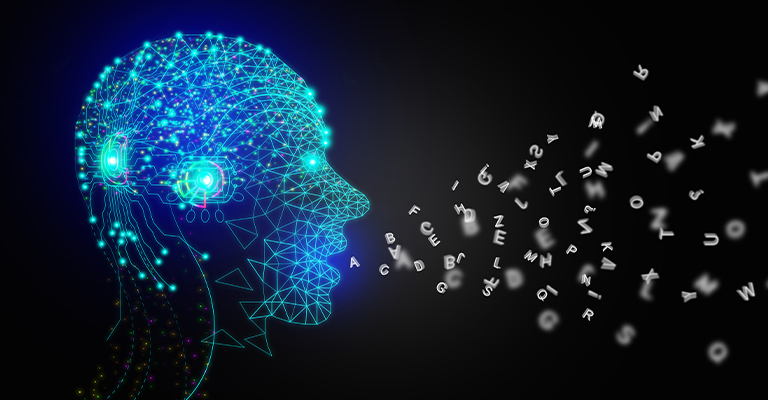
Looking ahead from current capabilities, translation quality will continue improving rapidly through ongoing research. New models train on even larger datasets with increasingly sophisticated algorithms. Consequently, the gap between AI and human translation narrows steadily toward imperceptibility. We’re approaching near-human quality for many language pairs already, with more to follow.
Multimodal Translation
Beyond text alone, future systems will translate images, videos, and audio simultaneously within integrated platforms. You can upload a video and automatically receive translated subtitles, dubbed audio, and localized graphics. This comprehensive approach will revolutionize multimedia marketing by removing technical barriers completely. Visual content will become as easy to localize as text is today.
Real-Time Collaboration
Taking integration further, global teams will work together seamlessly across language barriers without friction. Translation will happen so quickly it becomes invisible in conversations and meetings. International video conferences will feel like everyone speaks the same language naturally. This will accelerate global business operations and enable truly international teams to collaborate efficiently.
Hyper-Personalization
Meanwhile, AI will adapt translations to individual preferences and reading levels automatically. The same content might appear differently based on who’s reading it specifically. This ultra-personalized approach will maximize engagement across diverse audiences with varied needs. Translation becomes not just accurate but optimized for each individual reader’s comprehension and preferences.
Integration with Marketing Platforms
Perhaps most practically, AI language translation will embed directly into the marketing tools you already use. Your email platform, CMS, and social scheduler will translate automatically without separate workflows. You won’t need separate translation steps or tools anymore. Everything happens within your existing workflow seamlessly, making multilingual marketing as easy as single-language campaigns are today.
What to explore next: Ready to implement AI translation? What practical steps should you take to get started with your marketing team?
Getting Started with AI Translation
Ready to implement these capabilities in your marketing? Begin by identifying your highest-priority markets and content types strategically. Don’t try to translate everything at once, which overwhelms teams and dilutes focus. Focus on materials that drive the most business value directly. Product descriptions and landing pages usually offer the best return on translation investment initially.
Pilot Program
Before full implementation, run a small controlled test to learn and adjust. Choose one target market and one content type for your initial pilot. Measure results carefully and gather feedback from users and team members. Use these insights to refine your approach before expanding to additional markets. This measured approach reduces risk while building organizational knowledge.
Pilot program steps:
- Select one high-value market (2-4 weeks)
- Choose one content type to translate
- Set clear success metrics
- Implement translation workflow
- Gather feedback from users
- Measure against baseline performance
- Document lessons learned
Training Your Team
As you pilot, educate your marketing team about AI translation capabilities and limitations thoroughly. They need to understand when to use automation confidently and when to involve humans. Create clear guidelines for different content scenarios based on business impact. Well-trained teams make better decisions about resource allocation and quality standards.
Budget Allocation
Based on your pilot results, allocate resources between AI tools and human reviewers appropriately. High-volume, low-risk content can be fully automated to maximize efficiency. Critical materials need human oversight to protect brand and ensure quality. Balance efficiency with quality based on business impact and risk for each content type.
Measuring Success
Finally, track relevant metrics like translation speed, cost per word, and engagement rates systematically. Compare performance across languages and content types to identify patterns and opportunities. This data helps you optimize your translation strategy continuously over time. Moreover, it demonstrates clear ROI to stakeholders, justifying ongoing investment and expansion.
Success metrics beyond traffic:
- Presence in AI search results (ChatGPT, Perplexity, Gemini)
- Assisted conversions from multilingual content
- Brand mention growth in target markets
- Customer satisfaction scores by language
- Support ticket reduction rates
Related topics to explore:
- International SEO best practices
- Cultural adaptation in marketing
- Multilingual content management systems
- Global marketing analytics strategies
Conclusion
AI language translation has fundamentally changed global marketing in ways that continue unfolding. You can now reach audiences worldwide faster and more affordably than ever seemed possible. The technology continues improving steadily, making translations more natural and accurate with each iteration. However, human expertise remains valuable for maintaining brand voice and ensuring cultural sensitivity where it matters most.
Smart marketers combine AI efficiency with human insight strategically for optimal results. They use automation for speed and scale while applying human judgment to critical materials selectively. This balanced approach delivers the best outcomes across quality, speed, and cost dimensions. As you expand globally, AI translation becomes essential infrastructure rather than optional enhancement. Start implementing these tools gradually in your marketing strategy with clear objectives. Test different platforms and approaches to find what works best for your specific needs. Remember that translation is just the first step—true localization requires cultural understanding beyond words. Nevertheless, AI provides the foundation for successful global marketing campaigns at scale. Embrace this technology thoughtfully to compete effectively in international markets today and tomorrow.

